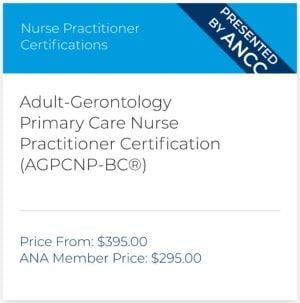Human Trafficking in Healthcare: How Nurses Can Make a Difference
5 min read
It was back in 2016 that two teenage victims of human trafficking were admitted to our emergency department, accompanied by law enforcement officers, seeking safety and medical treatment. The term human trafficking was familiar, but we believed, like many others, that it only occurred overseas. We never anticipated treating a victim of human trafficking at our small community hospital and were left feeling ill-equipped for their unexpected arrival. There were no protocols in place, no policies, and a general lack of awareness about this horrific crime. And we were not alone. A 2020 study estimated that only 1% of hospitals in the United States have a policy specific to the treatment of human trafficking patients. Along with the lack of policies, is a general lack of awareness and poor knowledge amongst healthcare providers. In a field that is so regimented, so policy driven, it was overwhelming to encounter a situation in which we felt so lost. How are we as nurses supposed to care for such a vulnerable population if we don’t know they even exist?
Human Trafficking in Healthcare
Human trafficking occurs when a controlling individual exploits another person for purposes of commercial sex and/or forced labor. Unfortunately, human trafficking is a widely misunderstood crime that is commonly believed to mirror the sensationalized images depicted in Hollywood. The truth is that this public health crisis can occur anywhere, to anyone, and is often hidden in plain sight. Research shows that victims seek medical care while being actively trafficked and healthcare providers may be the only profession to have contact with them during their time of exploitation. This makes it imperative to raise awareness about this topic in the nursing field, as nurses are uniquely positioned to identify and assist victims. It is also equally important for facilities to have clear policies in place for when a victim enters a healthcare facility to ensure a consistent and safe approach when treating this patient population. Nurses have a special type of contact with patients putting them in a position to utilize a trauma-informed approach, separate victims from their traffickers, and have private conversations about their situation, with the ultimate goal of providing life-saving resources.
Creating an Anti-Trafficking Initiative
Shortly after caring for our young victims, it became the mission of the forensic nurses with the Greater Baltimore Medical Center’s SAFE/DV Program to raise awareness about human trafficking and to better prepare our facility to treat this vulnerable patient population. We created the Anti-Trafficking Initiative to address the gaps identified in the healthcare system relating to human trafficking. A hospital-wide policy regarding the identification and treatment of human trafficking victims was developed. The goal of the policy was to provide clear instruction on the healthcare approach when a patient was suspected of victimization. Alongside policy development, education was viewed as an equal priority. An online-based human trafficking training was developed for nurses within the hospital system, which is currently an annual and mandatory competency for all nursing staff. After the creation of the Anti-Trafficking Initiative, the SAFE/DV Program expanded its services to better serve victims of human trafficking. The program offers 24/7 forensic nursing and advocacy services available to any suspected or confirmed victim within the hospital. This initiative has increased the identification of victims, improved the medical response, increased the compliance rates for mandated reporting of minors, and improved the overall health and healing of human trafficking victims and survivors.

Tips for Creating an Anti-Trafficking Initiative in Your Facility
- Identify key stakeholders:
Addressing human trafficking requires a multidisciplinary approach. Develop relationships with your local partners to discuss your community’s approach to this crime. Recommended partners include law enforcement agencies, your prosecutor’s office, child protective services, and local victim service agencies. Prior to developing any protocols, identify your community resources and be aware of where you can send patients for additional services. The importance of community partnerships cannot be understated.
- Gain support from your facility’s leadership team:
Set up a meeting with your leadership team to discuss the importance of your initiative. Prove to your leadership team why this is a problem that must be addressed and is a cause worthy of their support. Provide information such as local prevalence, recommendations from national organizations, and national best practices.
- Identify a champion:
It is recommended that your facility identify a human trafficking champion. The champion acts as the main contact, an advocate during the creation of the initiative, a liaison between your healthcare facility and community partners, and oversees policy and training development.
- Staff training:
Prior to enacting a new policy, it is imperative to offer staff training. There is no need to reinvent the wheel. There are evidence-based trainings available for free such as SOAR to Health and Wellness Training Program through the Office on Trafficking in Persons. An effective training program will include survivor input, definitions of human trafficking, risk factors, signs/symptoms of victimization, safety considerations, reporting requirements, and available resources.
- Policy development:
The development of policies and protocols is important to ensure your facility is equipped to identify and treat victims of human trafficking safely and effectively. It is important to incorporate information regarding trauma-informed care, mandated reporting obligations, and safety into your policy. SOAR offers recommendations for Protocol Development. HEAL Trafficking also offers a comprehensive Protocol Toolkit developed to assist healthcare professionals in creating policies and protocols specific to human trafficking.
Nurses are regarded as the most trusted profession in the United States and are in a unique position to identify, treat, and provide life-saving resources to victims of human trafficking. Nurses have the opportunity to significantly impact the lives of human trafficking victims in immeasurable ways. Together, nurses can take the lead on anti-trafficking initiatives, and continue to shine a light on this often-overlooked crisis, leading to safer communities free of human trafficking.
To learn more about our SAFE/DV Program and our Anti-Trafficking Initiative, please visit the following links:
Images sourced from Adobe Creative Cloud



